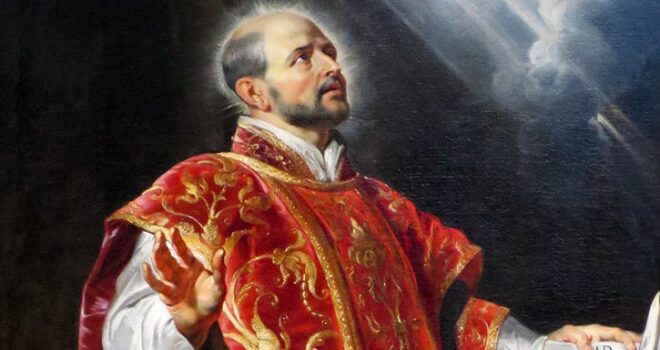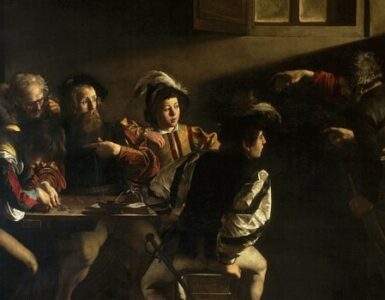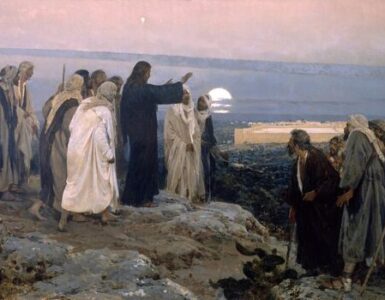Ignatius of Loyola, initially a soldier for Navarre, Spain, soon thereafter became a soldier for Christ. Recovering from battle wounds at his family’s castle in Loyola, in the Basque region of Spain, Ignatius experienced conversion in which he renounced his former sinful ways of war, arrogance, and lust and took up the Cross of poverty, humility, and service to the Lord. He quit the military and renounced his former life, gave away all his possessions, and became a wandering penitent.
He journeyed to Rome and to Jerusalem as a pilgrim and formed a society of brethren in 1534 to serve the poor, which eventually became the Jesuit movement in 1540. Blessedly, we have two critical primary sources of the saint, Spiritual Exercises and his autobiography; Loyola’s Spiritual Exercises reveal his faith, while the Autobiography reveals his actions taken for Christ.
Loyola wrote the Spiritual Exercises for his disciples, to help each achieve freedom of the soul in discovering and conforming to God’s will. Loyola devised a plan of meditation that covered four weeks, more or less, depending on the energy and success of the disciple. The emphasis is on understanding that the role of humans on earth is to praise God, and the rest of creation assists in this task.
The individual charts sin and resolves through prayer to vanquish the enemy. The penitent contemplates Christ and His call to all humans to fight for the glory of God. The individual must make humility a work of art, humbling the self to God, rejecting all desire for earthly things, imitating Christ in poverty and suffering. The disciple learns to choose wisely: if God wills it, you accept it, and do it; to acquire knowledge, as to why the choice must be made; to make the choice, the decision to act, during a moment of tranquility. In making a choice, combine imagery and reason—but ultimately the decision rests on reason.
The Exercises require daily close personal examination to commune with God, recognize sin, and eradicate it. In each exercise, the individual imagines the sinful body, imagines the suffering Christ and identifies with Christ’s passion. Loyola’s technique is an active approach to meditation, wherein one contemplates an image and wills a response, merging reason, will, and empathy. The Exercises are an extended form of penance, self-denial in the extreme, according to the imagery of Christ’s suffering.
The theme of Loyola’s life as described in his Autobiography was the fight against Satan for the souls of Christ. When he was enduring the pain of recuperation from his battle wounds, and a broken leg had to be set and reset, he learned to be grateful for the intense pain and resultant deformity, as it allowed him to grow in humility and to be a “martyr to his own pleasure.”
After his recovery, and his decision to begin a new life, he was overwhelmed by his past sins, and was constantly caught between happiness and sadness, thoughts of redemption and sin; it was as if angels and demons waged war over him. He became obsessed with trying to meet God’s demands for his soul.
In 1523, he journeyed to Jerusalem, guided by his soul, guided by visions, even one of Christ, which gave him certainty that he was on the right path. When he returned to Spain, he decided to expand his learning, which would bring further spiritual insights. He studied Thomas Aquinas and Peter Lombard in particular. But then his teachings of the spiritual exercises were brought to the attention of the Inquisition.
In 1528, Loyola was at the University of Paris, winning converts thanks to the Spiritual Exercises, yet he still felt uncertain and insecure. Once when attending to a plague-stricken person, he touched an infected boil and, terrified of acquiring the sickness but disdainful of his fear, plunged his hand into his mouth. In 1538, in Rome, he completed the Spiritual Exercises—at the same time as he completed his Autobiography—his journey of body and soul now complete.
By this time Loyola had attracted many followers whom he called a Company of men devoted to Christ willing to share poverty, humility, and danger for the sake of spreading the Good News. The Society of Jesus was constituted by Pope Paul III in 1540. Loyola pledged loyalty to the Pope, organizing his men as soldiers of God without weapons save those of education, charity, obedience, poverty, and humility.
Loyola, believing in action for the sake of Christianity, inspired his followers, the Jesuits, to journey to far-away places to help others and spread the word of God. Francis Xavier, a Jesuit priest and friend, went as a missionary to China. Other Jesuits traveled to North, Central, and South America.
Throughout their history, the fervent dedication of the Jesuits has brought anger, jealousy, and suppression. But would Catholicism have been spread so effectively, its roots planted so deeply in North America, without the work of the Jesuits?
Rubens, P. P. (1600s). Saint Ignatius of Loyola [painting]. Retrieved from Wikimedia Commons.
Ignatius. The Autobiography of Ignatius Loyola, ed. John C. Olin. (1974). Harper and Row.
Ignatius. The Spiritual Exercises. (1964). Doubleday & Co.











